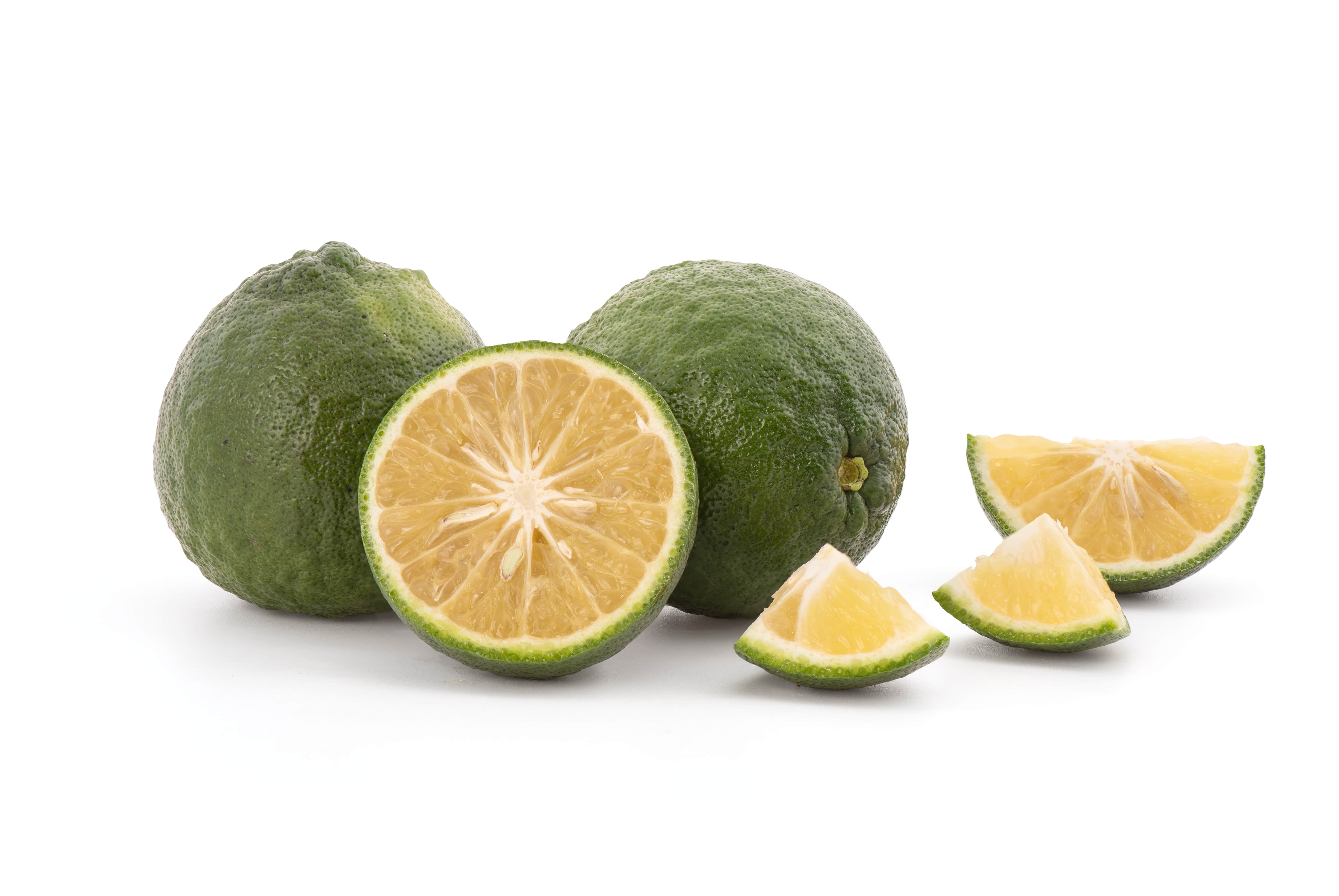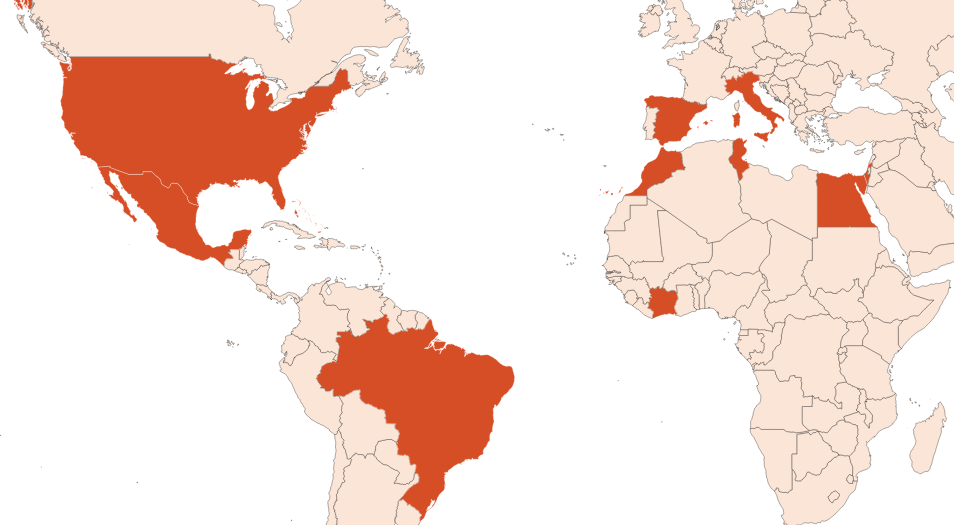Bitter Orange EO
Naturelle
Citrus > Zesty > Orange > Animalic > Orange Blossom

Crédits photo: ScenTree SAS
Latin name :
Citrus aurantium
Botanical profile :
The bitter orange tree is a tree of the Rutaceae family and the Citrus genus.
Geographic origin :
Originally from Southeast Asia, the fruits of the bitter orange tree are mainly grown in Spain and Florida.
Chemotypes :
The genus Citrus includes the vast majority of citrus fruits and includes a large number of varieties available in perfumery:
Bergamot - (Citrus bergamia) is a hybrid of lemon and bitter orange, grown for the essential oil of its fruit and petitgrain.
Bitter orange or bigarade orange - (Citrus aurantium), grown in Spain and Florida.
Citron - (Citrus medica), grown in Italy (Sicily).
Lemon - (Citrus limon), cultured in Italy for the essential oil of its fruit and of its leafy twigs (Petitgrain).
Combava - (Citrus hystrix), grown in Thailand and India.
Lime - (Citrus aurantifolia), grown for its fruit in Mexico for the most part.
Mandarin - (Citrus reticulata), grown mainly in Italy for its fruit and for its petitgrain, by extracting the leaves from the tree. Its hybrid with sweet orange gave birth to clementine.
Orange - (Citrus sinensis) is famous for the cultivation of its fruits, whose juice and essential oil are extracted in Brazil and California in particular, which is the most used of all perfumes.
Grapefruit - (Citrus paradisii) of Malay origin, is cultivated for its essential oil in Brazil and Israel in particular.
Yuzu - (Citrus junos), produced in Japan and Korea.
Bergamot - (Citrus bergamia) is a hybrid of lemon and bitter orange, grown for the essential oil of its fruit and petitgrain.
Bitter orange or bigarade orange - (Citrus aurantium), grown in Spain and Florida.
Citron - (Citrus medica), grown in Italy (Sicily).
Lemon - (Citrus limon), cultured in Italy for the essential oil of its fruit and of its leafy twigs (Petitgrain).
Combava - (Citrus hystrix), grown in Thailand and India.
Lime - (Citrus aurantifolia), grown for its fruit in Mexico for the most part.
Mandarin - (Citrus reticulata), grown mainly in Italy for its fruit and for its petitgrain, by extracting the leaves from the tree. Its hybrid with sweet orange gave birth to clementine.
Orange - (Citrus sinensis) is famous for the cultivation of its fruits, whose juice and essential oil are extracted in Brazil and California in particular, which is the most used of all perfumes.
Grapefruit - (Citrus paradisii) of Malay origin, is cultivated for its essential oil in Brazil and Israel in particular.
Yuzu - (Citrus junos), produced in Japan and Korea.
Extraction process :
The bigaradier is a tree about 3 meters tall in adulthood, and provides fruits 7 to 8 cm in diameter.
The harvest is mechanized: a tractor passes between the rows of trees, shakes them to make the fruits fall and take them to the factory in its receptacle. The fruits are sorted mechanically and washed. The pulp and zest are separated to obtain the juice and the essential oil separately.
The extraction is done in the sfumatrice, pricking the zest to extract the aromatic compounds. The essential oil is carried away by a stream of water to be centrifuged, in order to separate the oil from the water and the debris from the peel.
The yield of the essential oil of bitter orange is between 1 and 2%.
In addition, an orange juice concentration gives an ''Oil phase '' essential oil. After the extraction of the juice and the essential oil, the leftovers of the fruit, which are called ''molasses '', allows to collect D-limonene by distillation. Finally, a fractional distillation of the essential oil allows to separately collect an orange terpenes EO and a deterpenated EO (the percentage of deterpenation is specified) which concentrates the essential oil aldehydes, for more power.
The bigaradier gives many extracts. The bitter orange gives an essential oil by cold expression of the fruit. If we treat branches and twigs by hydrodistillation, we obtain Petitgrain Bigarade EO. Finally, if we use the flower, we can obtain Orange Blossom Absolute (extraction with volatile solvent) and Neroli EO (hydrodistillation).
The harvest is mechanized: a tractor passes between the rows of trees, shakes them to make the fruits fall and take them to the factory in its receptacle. The fruits are sorted mechanically and washed. The pulp and zest are separated to obtain the juice and the essential oil separately.
The extraction is done in the sfumatrice, pricking the zest to extract the aromatic compounds. The essential oil is carried away by a stream of water to be centrifuged, in order to separate the oil from the water and the debris from the peel.
The yield of the essential oil of bitter orange is between 1 and 2%.
In addition, an orange juice concentration gives an ''Oil phase '' essential oil. After the extraction of the juice and the essential oil, the leftovers of the fruit, which are called ''molasses '', allows to collect D-limonene by distillation. Finally, a fractional distillation of the essential oil allows to separately collect an orange terpenes EO and a deterpenated EO (the percentage of deterpenation is specified) which concentrates the essential oil aldehydes, for more power.
The bigaradier gives many extracts. The bitter orange gives an essential oil by cold expression of the fruit. If we treat branches and twigs by hydrodistillation, we obtain Petitgrain Bigarade EO. Finally, if we use the flower, we can obtain Orange Blossom Absolute (extraction with volatile solvent) and Neroli EO (hydrodistillation).
Major Components :
D-Limonene (75-85%)
Beta-Pinene (≈5%)
Aldehyde C-8 (≈2%)
Limonene Oxide (≈0,5%)
Linalyl Acetate (≈0,1%)
Aldehyde C-10 (≈0,1%)
Aldehyde C-9 (≈0,01%)
Can contain Eucalyptol
Beta-Pinene (≈5%)
Aldehyde C-8 (≈2%)
Limonene Oxide (≈0,5%)
Linalyl Acetate (≈0,1%)
Aldehyde C-10 (≈0,1%)
Aldehyde C-9 (≈0,01%)
Can contain Eucalyptol
- Uses in perfumery :
- Brings an amber facet in fine fragrance. Brings an animalic and floral facet to an orange accord.
- Other comments :
- The bitter orange comes from a crossing between pomelo (citrus maxima) and mandarin (citrus reticulata).
Citrus currently suffer from a disease called ''citrus greening ''. This disease is deadly for citrus fruits and no treatment exists. It is transmitted by a vector insect that attacks young shoots: the psylla. This results in the premature death of many trees and therefore the decline in the general production of the essential oil and its quality (reduction of the D-Limonene level). - Volatility :
- Head
- Appearance :
- Pale yellow liquid
- Stability :
- Solubility issues in perfumes
Citruses tend to fade through time in perfumes
Limonene tends to convert into Carvone through time, and to give a minthy note to the oil - Price Range :
- €€
- Aromatherapy :
Informations provided below are taken from reference works in aromatherapy. They are given for information purposes only and can not constitute medical information, nor engage the responsibility of ScenTree.
Bitter orange is known for its soothing and tonic properties on small dosis. It is indicated in cases of nervousness and dyspepsia (pain above the abdomen).

Crédits photo: ScenTree SAS
- EINECS number :
- 639-591-0
- FEMA number :
- 2823
- Allergens :
- D-Limonene - Linalool
- IFRA :
- This ingredient is restricted by IFRA
- Restriction type :
- RESTRICTION
- Cause of restriction :
- PHOTOTOXICITY
- Amendment :
- 49
- Comments :
- The Standard is set due to the phototoxic effects of Bitter orange peel oil expressed. For more detailed information on the application of this Standard, please refer to the note on phototoxic ingredients in chapter 1 of the Guidance for the use of IFRA Standards. If the level of furocoumarins is unknown, the restriction level specified in this IFRA Standard applies. Combination effects of phototoxic ingredients are only taken into consideration for the furocoumarin-containing fragrance ingredients (extracts) listed in the IFRA Standard of Citrus oils and other furocoumarins containing essential oils. If combinations of furocoumarin-containing phototoxic fragrance ingredients (extracts) are used, the use levels must be reduced accordingly. The sum of the concentrations of all furocoumarin-containing phototoxic fragrance ingredients (extracts), expressed in of their recommended upper concentration level in the consumer product shall not exceed 100. For qualities of the expressed oil in which the less volatile components have been concentrated by partial or total removal of the terpene fraction, this limit should be reduced in proportion to the degree of concentration.
- Quantitative limit on the use :
-
Cat.1 Cat.2 Cat.3 Cat.4 Cat.5A Cat.5B Cat.5C Cat.5D Cat.6 1,25 % 1,25 % 1,25 % 1,25 % 1,25 % 1,25 % 1,25 % 1,25 % 1,25 % Cat.7A Cat.7B Cat.8 Cat.9 Cat.10A Cat.10B Cat.11A Cat.11B Cat.12 No Restriction 1,25 % 1,25 % No Restriction No Restriction 1,25 % No Restriction 1,25 % No Restriction - Annexe I :
- Some regulated synthetic ingredients are found in nature and in certain proportions in natural ingredients. This presence in nature has to be taken into account when calculating limits of use recommended by the IFRA. In case you do not know these concentrations, you can use the ones estimated by the IFRA. Here they are :
- Restriction type :
- RESTRICTION NON QRA
- Cause of restriction :
- PHOTOTOXICITY
- Amendment :
- 48
- Comments :
- The limit only applies to applications on skin exposed to sunshine, excluding rinse-off products (please refer to Table 4 of the QRA booklet for more detailed information). If combinations of phototoxic fragrance ingredients are used, the use levels have to be reduced accordingly. The sum of the concentrations of all phototoxic ingredients, expressed in % of their recommended maximum level in the consumer product shall not exceed 100. Note: See remark on phototoxic ingredients in the Introduction to the IFRA Standards (Appendix 8 to the IFRA Code of Practice) and the Standard on Citrus oil and other furocoumarins-containing essential oils.
- Annexe I :
- Some regulated synthetic ingredients are found in nature and in certain proportions in natural ingredients. This presence in nature has to be taken into account when calculating limits of use recommended by the IFRA. In case you do not know these concentrations, you can use the ones estimated by the IFRA. Here they are :
| List of regulated compounds contained in this ingredient | ||
|---|---|---|
| Regulated ingredient name | CAS N° | Estimated Concentration |
| Geraniol | 106-24-1 | 0,04 |
| Perilla aldehyde | 2111-75-3 | 0,02 |
| Citral | 5392-40-5 | 0,1 |
| Skin contact products | Non skin contact products | |
|---|---|---|
| Leave on products | Rinse off products | |
| 1,25 % | X | X |
| List of regulated compounds contained in this ingredient | ||
|---|---|---|
| Regulated ingredient name | CAS N° | Estimated Concentration |
| Geraniol | 106-24-1 | 0,04 |
| Perilla aldehyde | 2111-75-3 | 0,02 |
| Citral | 5392-40-5 | 0,1 |
To learn more about IFRA's standards : https://ifrafragrance.org/safe-use/library
ScenTree is solely responsible for the information provided here.

